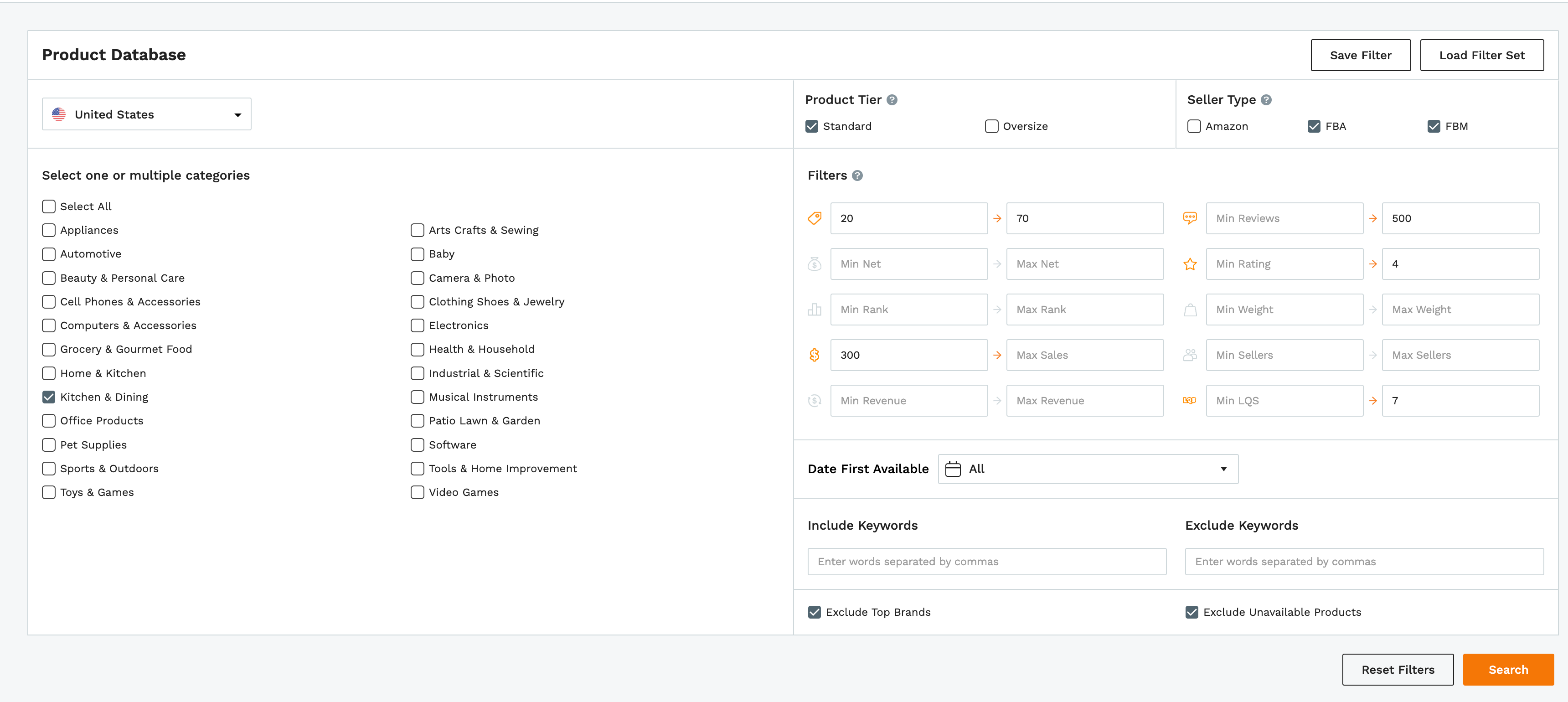The hardest part about being an Amazon seller is figuring out what to sell on Amazon. Product research is a critical step in becoming a successful ecommerce seller.
It’s not as easy as picking a random product, buying it from a supplier, and throwing it up on Amazon. You need to follow specific criteria to ensure proper demand, not too much competition, and profit after costs and fees.
This article will act as a one-stop shop for how to do product research for Amazon. We’ll provide a quick overview of Amazon product research and links to our Live Amazon Product Research Webinar Series!
Amazon Product Research Tutorials
Check out the full playlist here and don’t forget to subscribe for future episodes!
Episode 8: Narrowing Down Ideas
Episode 7: Pet Products
Episode 6: Keyword Scout
Episode 5: Kitchen & Dining
Episode 4: Home & Kitchen
How to do Amazon product research
Before starting your product research journey, you should have set criteria to quickly sort through the products that won’t be a good fit for your business. Product research doesn’t have to be difficult, but you should go in with a plan.
Stick to your criteria and be patient as you comb through hundreds or thousands of products before finding the one!
Below are the criteria that we follow at Jungle Scout:
- High demand: You need to be sure that there is actually demand for the product you are selling. If it is a trending product, for example, the demand may fizzle out over time, so look for items that have consistent demand year-round.
- Low competition: If you are a new seller, we recommend searching for products with lower competition. Of course, that is easier said than done, but with Jungle Scout’s product research tools, you can find popular, in-demand products with lower competition.
- Profitable: This one is obvious, right? You must be profitable after product costs, shipping, and of course, Amazon’s fees. Jungle Scout’s browser extension is a great tool to estimate the profitability of each product you are exploring selling while you’re actually looking around on Amazon.
- Ease to sell: Look for products that don’t have too many moving parts, complicated electronics, are fragile, or are oversized — at least when first starting out.
- Improvement potential: Look at what your competitors are doing and figure out ways you can improve your products to make them even better than what’s already been done. Can you improve the quality? Can you improve the effectiveness of the product?
- Legal issues: Before selling a product, be sure that there are no legal issues surrounding it. For example, you don’t want to sell a product if another company has a patent for that product.
Using product research software to find a profitable product
Jungle Scout has different tools you can use to find high-demand and low-competition products to sell on Amazon. One tool in particular that allows you to search Amazon’s entire product catalog is Product Database.
Easily narrow down your product search by adjusting the many filters available within the tool. Here are the filters that we use we conducting product research:
- Price (for profitability): Aim for $20-70
- Sales (for demand): Aim for at least 300 units per month (~10 sales per day)
- Number of reviews (for competition): We want to make sure that the top 10 products have an average of 500 reviews or fewer, and ideally, 3 to 5 of them have fewer than 50 reviews
- Rating: Find products with low star ratings, aiming for a maximum of 4 stars (these will give you the opportunity to improve products and beat the competition)
- Listing Quality Score, or LQS: Find products with listings that have room for improvements, aiming for a maximum of 5 to 7 LQS
This is just what we recommend. Take some time to go through the tool and adjust the filters based on your criteria, budget, and product interests.



